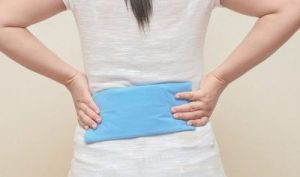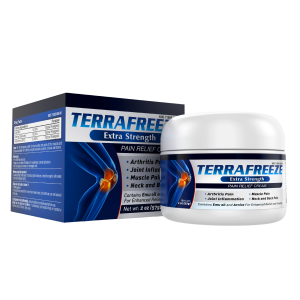Have you ever experienced back muscle or lower back strain? It can happen at any moment, even when you least expect it, when doing the most mundane activities like cleaning the house, or when dancing or playing sports. Pulled muscles or strains, happen when a muscle is overstretched, often leading to a more severe strain and in some cases a partial tear.
When you first feel a strain, you may not take it seriously, but a lower back strain can be quite intense. The good news is that pulled back muscles can be alleviated in days or weeks depending on the degree of the pain.
One of the most frequent symptoms can be the lower left side back pain. And surprisingly, although the pain may have arrived in a matter of seconds from a simple task, the reality is, the muscles of that area were most likely overstretched a long time before.
A simple action like sitting in a chair for a long period of time, being under stress, not getting enough water, being overweight or exercising incorrectly are all things that can put you at risk of muscle imbalances and injuries like a strained or pulled muscle or triggering some pain points in the lower back or spine.
If taking a pain killer crossed your mind as an initial reaction to your pulled or strained back muscle, then please read on to find a more safe and effective way to treat this pain.
Below, you can find 5 tips that will help you recover relatively fast from a pulled back muscle or lower back strain;
1. Ice or cold pack treatment to heal pulled back muscle
The very first thing and most important to remember when you feel the discomfort or injury is to apply ice on the area. Use an ice pack and start massaging the affected area in a circular motion, apply a thin towel or cover between the ice pack and your skin to ensure you do not irritate or harm the skin, and try not to keep the ice pack in one place for too long. You can take care of your discomfort with ice, implementing mini sessions of 15 minutes each for a couple of days and then continue more sporadically.
Ice can be your best ally when it comes to inflammation and pain, as it will reduce inflammation and minimize pain and swelling.
 2. Alternate cold and heat to the pulled back muscle area
2. Alternate cold and heat to the pulled back muscle area
After you have finished your mini session with an ice pack, try to apply a follow up with a heat pack immediately after. This will truly have an impact on the pain, and it will be just like shock treatment for any muscle spasms you may feel. Alternating cold and heat sessions will have a tremendous impact on muscles pain, even for more severe pain located in the lower back.
Other ways to create this thermic shock is alternating cold and hot showers, cold and hot pad appliances and topical pain relief creams that have hot and cold effects on the muscles.
If you want to go the next level, instead of using a regular heating pad, try a Far Infrared Heated Pad; you can use it even when you are sleeping as most all have a digital multi-function timer and provide negative ion therapy. The heat will penetrate deeper and will be more therapeutic overall. Always check the manufacturer recommendations as they differ from brands.
3. Choosing only natural pain relief products
As mentioned before, if taking a pain killer has crossed your mind, please first try the ice and heat alternative therapy. If this fails, think again. Inflammation has an important role in the restorative process of your back pain. However, it is also known that the older we get, the inflammatory response is present for longer periods of time.
A few different types of NSAIDs are available over the counter like Aspirin, Ibuprofen or Naproxen (Aleve) but bear in mind that this treatment cannot last more than 10 days and the risks of side effects like heart attack, stroke or stomach bleeding are possible.

As an alternative, you can use a topical pain relief cream that contains natural ingredients like TERRAFREEZE™. This will help improve the mobility and function, reduce inflammation and the discomfort you feel in your lower back dissipate. Topical creams work quicker as they don’t have to pass through the stomach to start working, it goes to work right on contact. It can be applied 3-4 times daily as needed until the strain is healed.
 4. Relax on a schedule
4. Relax on a schedule
Relaxation is key if you want to reduce any discomfort and pain in the body and specifically in the spine. However, try to listen to your body as much as possible and rest when needed. Do not sleep more than you need, do not move more than you need. Trust that your body will know where to place a limit and listen. If one particular movement has caused you the injury, try not to repeat that for a few days, allowing the muscle to fully settle.
Try to be fully aware of your posture throughout the day, as good posture will allow you to feel less discomfort in the spine. Every time you are sitting or standing, grabbing something from the floor, always making sure you have good posture.

